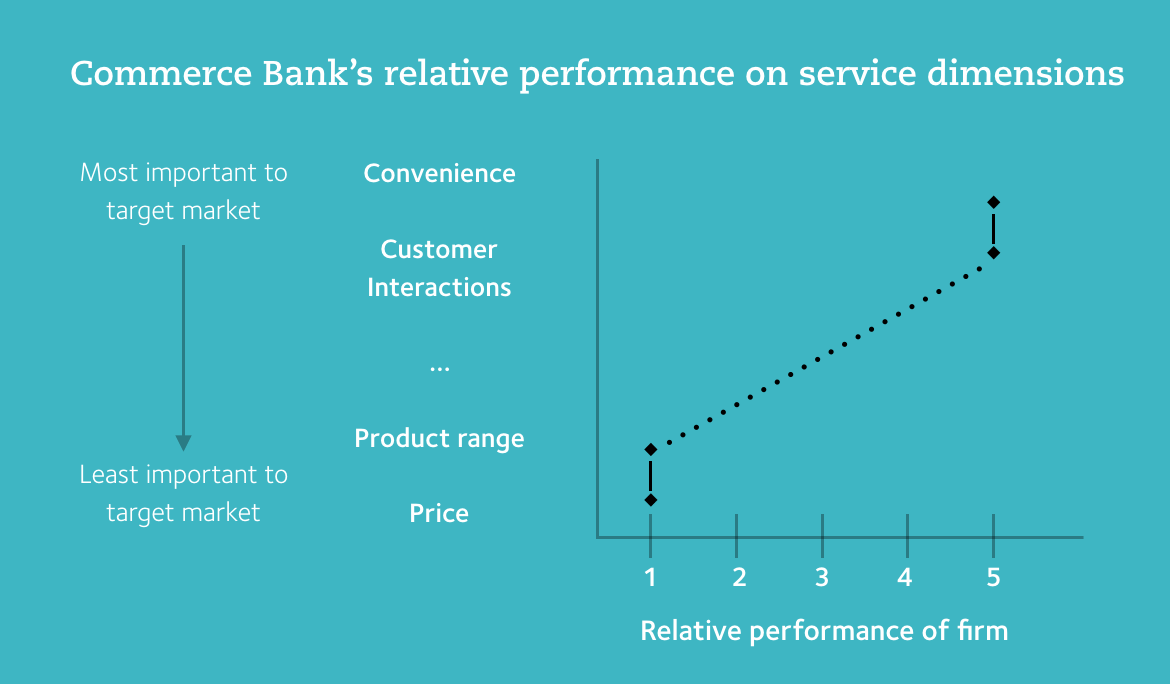
5 min read
To deliver the best customer service, “dare to be bad”
To Deliver The Best Customer Service, “Dare To Be Bad” (And Create A Brand Perceptual Map)
Perceptual mapping, AKA creating a customer service map, will show you where to spend money to improve customer experience and which areas not to bother with.
If you’re a business owner, you probably want your company to offer customers the best of everything—friendly service, good value, attractive pricing, convenience, and the highest-quality product. It’s only natural to shoot for every star in the sky, but is this the right strategy? Is such an encompassing goal possible? And most importantly, do customers even care?
To these questions, management experts Frances X. Frei and Anne Morriss answer “no,” “no” and “no.” In their book, Uncommon Service, they assert that chasing all-around excellence actually leads to all-around mediocrity. Instead, they advocate for an approach where companies “dare to be bad” at one thing, so they may in turn be best-in-class at another.
Differentiation And Customer Service
The concept the authors refer to is closely associated with a key element of business – differentiation. A differentiator is something that sets a company apart, generally an innovation or key feature of a product no competitors offer, or a service the company does differently or much better than anyone else in the industry. A differentiator delights customers, and offering such a service can help a brand find their competitive niche. So the question is, how do you figure out where to focus your energy (and money) to ensure you excel and stand out from the crowd?
Finding Your Niche With Brand Mapping
When you first think about it, deliberately choosing to deliver bad service seems to make no sense. But Frei and Morriss’s book is full of stories about companies that have done exactly that, with huge success. It’s all about tradeoffs. To effectively determine what to trade off for what, it’s essential to understand what the target market values the most – and the least.
Frei and Morriss use a graphic device called an attribute map (sometimes known as a strategy map or brand positioning map) to explain their theory. The map helps companies visualize where they stand relative to their customers’ negative and positive reactions to product and services. When companies include brand mapping in their strategy, they can identify opportunities to invest for greater competitive advantage, and areas where they don’t need to spend another nickel.

Brand Mapping Strategy: The Commerce Bank Example
One effective example of the brand positioning map in strategy is Commerce Bank. This bank started out offering only basic checking and savings accounts, coupled with the lowest deposit rates in the industry. Customers flocked, and Commerce is one of the top ten banks in the world today. What’s the secret?
There is no secret, really. Commerce simply understood that its target customers cared substantially more about convenience and friendly service than they did about deposit rates and product range. Industry pain points at the time included limited bank hours Monday through Friday, and tellers who were perceived as remote and impersonal.
Commerce’s service model turned the status quo around. They opened their branches 7 days a week, and offered extended hours for people to bank on the way home from work. Staffers were friendly and helpful, and went above and beyond; they even walked customers to their cars with umbrellas when it was raining. Commerce’s tagline became, “The World’s Most Convenient Bank,” and its service model made customers feel welcome and wanted. It simplified their lives. This set Commerce apart, or differentiated them, and is where the company found its competitive niche.
Even better, the exciting new customer service model was self-funded. Low deposit rates enabled Commerce to spend money it needed to keep branches open longer. The simplified product offerings meant Commerce could hire staff based first on friendly attitude and willingness to learn, rather than on banking skill set. Personnel was less expensive, and enabling better customer interactions at a lower price.
How to Use Perceptual Mapping to Find Your Niche
By intentionally choosing to be “bad” at the right things, Commerce achieved excellence, and they are certainly not the only business to do so. Although it may seem counterintuitive at first, identifying where to focus and delight, and where to not bother, can mean the difference between failure or success.
Want to learn more about how to improve your customer’s experience with brand mapping? Speak with one of our Product Strategists today!


Leave a Reply